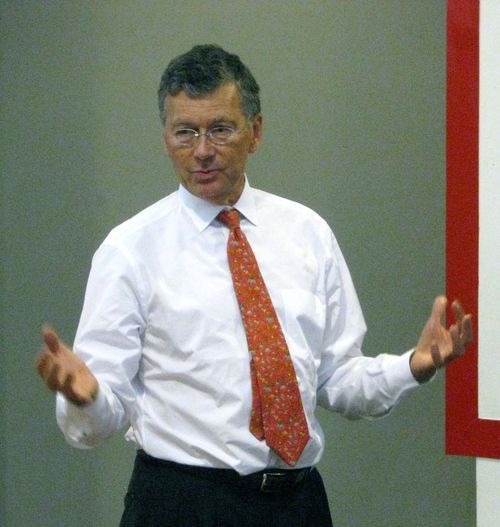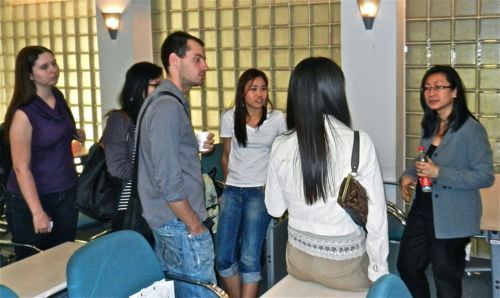While newspapers are shedding 1,400 jobs a month, internet media are creating 400 jobs, according to Ad Age. Digital media now employ more than broadcast TV.
Related:

 This interview was originally published in the magazine Periodistas (Journalists), a publication of the Federation of Journalist Associations of Spain (FAPE), and is translated below. (Here is the original in Spanish.)
This interview was originally published in the magazine Periodistas (Journalists), a publication of the Federation of Journalist Associations of Spain (FAPE), and is translated below. (Here is the original in Spanish.)  |
| Reed Hundt |
Newton (Knight Foundation
photo)
|
 Entrepreneurial journalists have a tough job.
Entrepreneurial journalists have a tough job. |
| Rosalia Lloret: People are searching for credible sources amid an avalanche of information. |

 |
| Yoichi Nishimura (photo by Yang Shaogong) |

 |
Tini Tran, right, chats with students after her talk
on "Survival Skills for a Foreign Correspondent"
|
 |
| Gumersindo Lafuente of El Pais (photo by James Breiner |